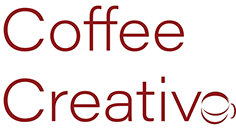Morning Coffee: Marketing Strategy key to OH&S
The Occupational Health and Safety Services Industry in Australia is in the doldrums. The good news is, fair winds might be starting blow.
Last year, beyond the Pandemic, the economic and social environment in which the industry works includes falling business confidence and strong competition have impacted on the OH&S industry.
Coffee Creative’s David Gilchrist said, ‘fluctuations in business confidence that has fallen over the past five years has limited growth in industry revenue.’
He says that over the same period other factors have also impacted on industry revenue including strong price-based competition causing profits to fall and contractions in key downstream sectors, including manufacturing and mining, have further limited growth in industry revenue. On the up-side, regulatory environment changes, and greater demand for compliance and assurance services for hazardous environments have boosted revenue as demand for services has risen.
The net result has seen expected revenue to increase to reach $1.6 billion by the end of this financial year. This includes an anticipated increase of 7.7% in the current year, mainly due to rising business activity as firms resume operations following restrictions associated with the COVID-19 pandemic in the first half of 2020.
Looking ahead, activity in the Manufacturing division, the industry's largest market, is projected to increase over the next five years, alongside demand from building construction firms causing potential improvements in Industry revenue.
However, just as there seems to be a little glimmer of light on the horizon, wage costs are forecast to rise. Those wage rises come as companies increasingly rely on highly skilled employees.
David Gilchrist says that, ‘This cocktail of ingredients underscores the need for solid marketing and communications strategies’
A full-service agency like Coffee Creative recognises that the sector can benefit from the current requirements on business for safe working conditions. Moreover, more stringent regulations have supported demand for industry services.
David Gilchrist said, ‘The challenge inherent in the industry is that small, independent firms dominate the industry, which is highly labour-intensive. Wages are the largest cost component for industry operators. That means a marketing strategy that recognises that larger players can gain market share through strategic mergers and acquisitions, which increases the range of services on offer and their ability to service larger clients.’
However, David says that the continuing need for compliance with OH&S regulations ensures positive demand for the industry.
‘That is because businesses that do not meet these regulations risk large fines or litigation as a result of employee injuries,’ David said.
He says, a marketing strategy for businesses within this sector would therefore tend to have sustainability as a key goal over growth.
“Without sustainability, any increases profitability, business growth or even market share may well be unmaintainable. And in the long-term that is not ideal,” David said.
He says a strategy with sustainability at its core means that any business revenue increases from regulatory environment changes, and greater demand for compliance and assurance services for hazardous environments are more likely to have a more lasting positive boost to business over a longer term.


